2024 Subaru Crosstrek Sport Vs Limited: Which Trim is Right for You?

Buyers sure do love the Subaru Crosstrek.
Not only is Subaru’s smallest SUV the sales leader in its class, it shifted enough units to be the 15th most popular vehicle in America in 2022. A whole new Crosstrek arrives for the 2024 model year. No really, even if it doesn’t look like it, this latest model arrives with a new platform and a raft of interior upgrades.
We grabbed two of the highest ’24 trims to compare: the Sport (Onyx in Canada) and Limited. Is the latter worth the extra outlay? Let’s find out.
Style
Subaru has arguably found its design niche with the Crosstrek. The second-most Subaru to ever Subaru, being the de facto Outback flagship. The little SUV looks robust without being too try-hard. The black plastic cladding has spread, but there’s a practical reason: you’d rather scrape that than paint, right? The proportions are familiar, but the grille is now a larger, hexagonal affair framed by thinner headlights. Move around to the back, and the taillights now feature a C-shaped inner section similar to other Subaru models.
While lower trims (and the rough-and-tumble Wilderness) ride on 17-inch alloys, the two trims we have here move up to 18s. They’re the same basic wheel design, but the Sport/Onyx quartet are flat black; the Limited gets fancier two-tone jobs. Regarding paint, the Limited enjoys a few extra hues, including the Sun Blaze Pearl you see here. There are additional paint differences between the US and Canada.
Other differences include the mirrors—dark gray on Limited, gloss black on the junior trim—and the grille accent pieces. Oh, and the yellow. This is where there are actually differences between the US and Canada as well. Our Can-spec tester has yellow foglight surrounds; in America, the Sport ditches those for L-shaped yellow accents in the bumper, and a strip along the lower door panels.
Subaru Crosstrek Sport vs Limited: Cabin Space
More than just about any other new-for-2024 model on sale today, these Crosstreks have the uncanny ability to feel instantly familiar. My brain knows this is new, but my eyes aren’t convinced. Okay, the 11.6-inch central touchscreen is a big change—more on that in a bit. The dashboard design is plain and safe, while the doors keep controls high up and in easy reach. Big door pockets allow for plenty of water bottle storage. Trim-versus-trim design differences boil down to some extra bright work on the Limited’s controls.
The Sport/Onyx uses comfy fabric seats with yellow accent stitching. Front-row seat heating is standard on either side of the border; the Sport has an optional power driver’s seat and sunroof, while those are both standard on the Onyx. A leather-wrapped steering wheel is standard in both countries, but only Canada’s is heated. Sorry, America: no Crosstrek has a warm-up wheel. Limited buyers will find leather-wrapped seats with orange stitching.
Space is plenty comfortable for adults in the front, with 38.7 inches (983 millimeters) of headroom and a massive 42.9 inches (1,090 mm) for legs. Back-seat passengers get a smidge less headroom and 36.5 inches (927 mm) of legroom. The seats are comfortable and well-angled, with good under-thigh support. Our Onyx tester even came with a Subaru-approved backseat cover, which made transporting my nine-month-old dog that much easier.
Tech and Features
Every Crosstrek other than the base model comes with this large touchscreen. This is the unit we’ve grown accustomed to in the Outback, Ascent, and WRX. It’s big and easy to use, but the design is so dated you expect Clippy to pop up and offer his services. The screen is also susceptible to glare. In Canada, the Limited bundles native navigation as standard; in America, it’s optional. The Sport/Onyx do without, but with wireless Apple CarPlay and Android Auto available with the big screen, that point is almost moot.
Subaru skips out on a fully digital instrument cluster, but retains a small adjustable screen between the dials. The screen shows data such as live fuel consumption, driver assistance alerts, and—my personal favorite—the amount of fuel saved by the standard start/stop system.
The other major advantage the Limited has is a 10-speaker Harman Kardon sound system. At least, on paper. In practice it’s not a huge upgrade; I never felt wanting in the six-speaker Onyx.
Powertrain, Driving Feel, and Fuel Economy
Both of these Crosstrek trims employ the larger 2.5-liter flat-four engine. It’s a big improvement over the 2.0-liter found in the lower two trims, and a big part of the appeal of moving up the trim walk. Horsepower stands at 182 hp, while the torque peak is 178 pound-feet. As has always been the case on these shores, that power goes to all four wheels. A continuously variable transmission (CVT) is the only transmission choice for the 2024 Crosstrek.
Since both of these models use the same powertrain, sending power to the same-sized wheels, they’re functionally identical to drive. The Limited is lugging around a few extra pounds due to content, but buyers are unlikely to notice. It’s an easy car to drive: still functionally an Impreza on stilts, the Crosstrek has the predictable, smooth ride of a car, but with 8.7 inches (220 mm) of ground clearance. Steering is light and accurate, while the brakes are progressive. The CVT is decent: it’ll howl when pressed into full effort for highway passes, but includes fake “shifts” to minimize the racket. The added benefit of a CVT is great off-the-line response.
Fuel economy is amongst the best in the segment, with these Crosstreks posting 26 mpg city and 33 mpg highway, for a combined rating of 29 mpg. (Canadian figures are 8.9, 7.2, and 8.1 L/100 km.) Only the Toyota Corolla Cross, in either its gas-only or (especially) in its Hybrid form, posts better figures for a small AWD SUV.
Cargo and Towing
There is zero difference between these two when it comes to cargo space. Both offer 19.9 cubic feet (564 liters) of storage with the back seats up, and 54.7 cu ft (1,549 lb) with them down.
Towing capacity is capped at a pretty standard 1,500 pounds (680 kilograms) for these Crosstrek siblings. The Wilderness bumps that figure up to a huge 3,500 lb (1,588 kg).
Subaru Crosstrek Sport vs Limited: Safety
Subaru’s EyeSight driver assistance system is standard on all Crosstrek trims. The system bundles lane-keep, adaptive cruise control, automated emergency braking, and a driver monitoring system under the banner. Blind-spot monitoring is a separate safety assist; it’s standard on our two Canadian testers, but only standard on the Limited in America (and optional on the Premium and Sport).
At the time of writing, the 2024 Subaru Crosstrek had yet to receive a crash-test rating from the National Highway Traffic Safety Administration (NHTSA). It did however earn a Top Safety Pick designation from the Insurance Institute for Highway Safety (IIHS).
Pricing
In America, the Crosstrek Sport lists for $30,540 while the Limited bumps that up to $32,440. In Canada, the Onyx runs to $36,190 CAD and the Limited touches $39,190 CAD. All prices include the standard destination and delivery fees, but come before options.
The as-tested gaps are slightly different. To match the Canadian content here—minus the heated steering wheel—you’re looking at $32,460 for the Sport, and $34,885 for the Limited.
Subaru Crosstrek Sport vs Limited: Verdict
Are the leather seating, native navigation, and more powerful audio system worth the extra outlay for the 2024 Subaru Crosstrek? We’re leaning no. The Sport/Onyx offers up the same great overall package with a useful few grand in savings. Unless you really need the seat material that’s more uncomfortable in hot weather—or you have an aversion to yellow trim—we recommend skipping the Limited.
Become an AutoGuide insider. Get the latest from the automotive world first by subscribing to our newsletter here.

Kyle began his automotive obsession before he even started school, courtesy of a remote control Porsche and various LEGO sets. He later studied advertising and graphic design at Humber College, which led him to writing about cars (both real and digital). He is now a proud member of the Automobile Journalists Association of Canada (AJAC), where he was the Journalist of the Year runner-up for 2021.
More by Kyle Patrick



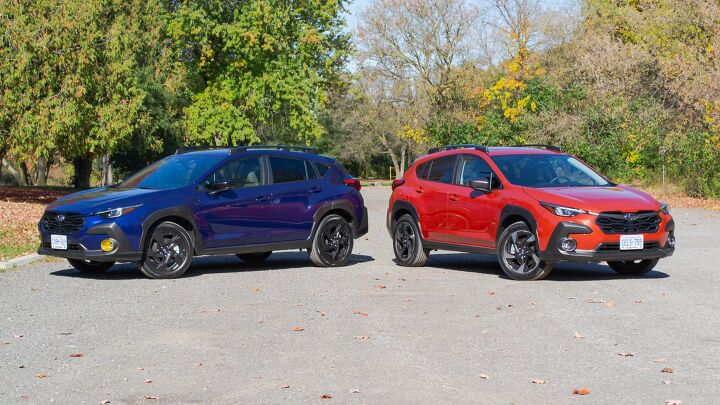
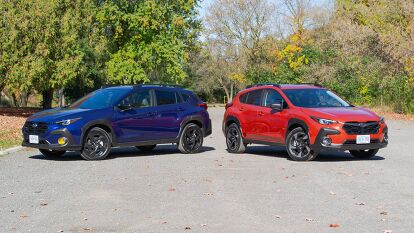




















































































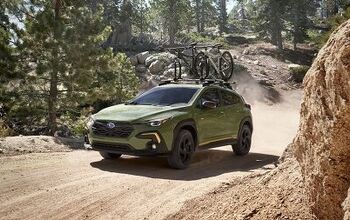
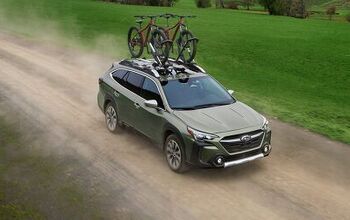
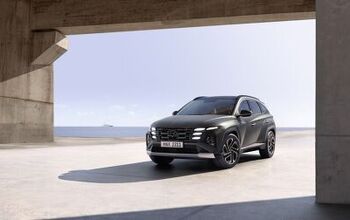


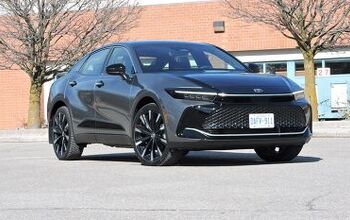
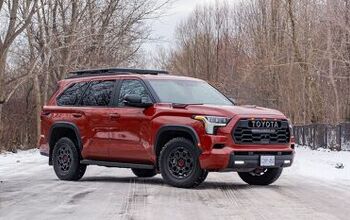
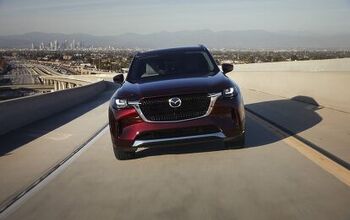


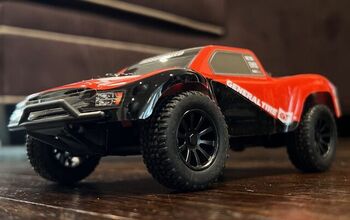
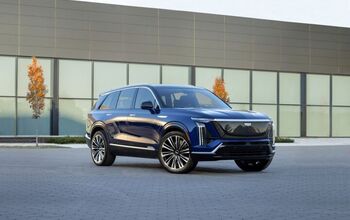



Comments
Join the conversation